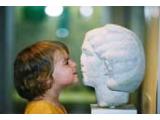Yorkshire Museum
| |||||||||||||||||||||
The Yorkshire Museum is home to some of Britain's finest archaeological treasures and the history of England until 1550 can be traced through its galleries. It also specialises in geology and biology and its rocks, fossils, animal and plant materials are often used in our special exhibitions. The Roman Gallery Many of the archaeological objects were discovered in the region and reflect York's changing identity under different invaders as Eboracum (Roman York), Eoforwic (Anglo Saxon York) and Jorvik (Viking York). Visitors can travel through these different periods, and see items from ordinary people's everyday life as well as treasures owned by the very rich. Highlights include the Middleham Jewel and Ring, the Ormside Bowl and the York Helmet. The Viking Gallery The museum was built on the site of the medieval St Mary's Abbey and remains of the abbey can be seen on the lower floor of the museum. The story of how the monks lived is told here. The ruins of the Abbey's church, gatehouse and precinct wall can be seen in the Museum Gardens. Further on in the museum our Hunters and Hunted gallery focuses on the sea creatures which lived millions of years ago in the time of the dinosaurs. The Yorkshire Museum was opened in 1830 by the Yorkshire Philosophical Society, a society devoted to the study of science through public display and study of archaeology, geology and natural history collections. Activities at the Yorkshire Museum It was one of the first purpose-built museums in the country. The first meeting of the British Association for the Advancement for Science was held at the Yorkshire Museum in 1831. | |||||||||||||||||||||
